University College London
Type of resources
Topics
Keywords
Contact for the resource
Provided by
Years
Formats
Representation types
Update frequencies
Scale
Resolution
-
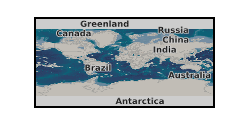
This UKCCSRC (UK Carbon Capture and Storage Research Centre) Call 1 project involved the development, testing and validation of a two-fluid transient flow model for simulating outflow following the failure of high pressure CO2 pipelines is presented. The project made use of experimental data and used experimental data available from other UK/EC funded projects. The model developed accounts for thermal and mechanical non-equilibrium effects during depressurisation by utilising simple constitutive relations describing inter-phase mass, heat and momentum transfer in terms of relaxation to equilibrium. Pipe wall/fluid heat exchange on the other hand is modelled by coupling the fluid model with a finite difference transient heat conduction model. This paper describes the model, the details of its numerical solution and its validation as well as parametric analysis of relevant parameters. http://www.sciencedirect.com/science/article/pii/S1750583614002394, DOI: 10.1016/j.ijggc.2014.08.013. UKCCSRC grant UKCCSRC-C1-07.
-
Measurements of sediment properties (incl. organic and carbonate content), radionuclides (210Pb, 137Cs, 241Am) and elements (including mercury, nickel, copper, zinc, and lead) in lake sediment successions. Radionuclide dating provides a reliable chronology of sediment ages from the mid-19th century (sometimes only 20th century) to the present (2016). The dataset comprises a standardised matrix of multiple measured sediment variables (element values per mass) against stratigraphic depth for 8 lakes. In these water bodies multiple core datasets exist, one collected from the littoral zone, one of intermediate depth and one from the deepest area. The deepest core was used for 210Pb dating. The intermediate and littoral depth cores are not dated, except at Esthwaite where the littoral core (29328_ESTH_LITT.csv) had been previously collected, 210Pb dated and measured for organic and carbonate content. Full details about this dataset can be found at https://doi.org/10.5285/87dec506-ca7f-4b57-a605-486ec9d8cca2
-
These data are the recorded outcomes of binary male choice experiments. Teleopsis dalmanni males were able to choose to mate with either a large or a small female. Individuals were taken from laboratory stock populations. Also included is information on male genotype indicating if he is a carrier of a sex-ratio distorting or nondistorting X chromosome, and a calculation of male preference. The second dataset additionally contains measures of male eyespan and thorax length obtained by measuring images. Full details about this nonGeographicDataset can be found at https://doi.org/10.5285/d6c36f89-07f1-4bcc-96a0-f5302fd3ccec
-
The data contain phenotype measures of Teleopsis dalmanni males. Individuals were all taken from a laboratory stock population. Individuals carried either a nondistorting wildtype X chromosome or a sex-ratio distorting X chromosome. Data were obtained by measuring images of testes, accessory glands, thorax and eyespan, and direct counts of fertilised (hatched) and unfertilised egg. Full details about this nonGeographicDataset can be found at https://doi.org/10.5285/6e4c5823-35f5-4c90-b616-2190d87c0391
-
The raw data contain genotype information for offspring collected from controlled crosses of Teleopsis dalmanni. Parents were taken from laboratory stock populations. Offspring genotypes were assigned by sizing a microsatellite, which distinguishes sex-ratio distorting and nondistorting X chromosomes. Also included is information on offspring sex and food treatment. The processed data summarises genotype counts by collection date and cage id (date/food treatment/cage). Also included is a fitness calculation for each genotype in each cage. Full details about this nonGeographicDataset can be found at https://doi.org/10.5285/71529a64-6c1b-4c8f-ae3f-7c4870efd976
-
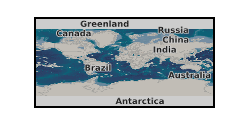
These data contain time series of stress, strain, confining pressure, elastic wave velocities of samples of Vermont antigorite and Westerly granite deformed under hydrostatic and triaxial conditions at room temperature and dry conditions. This dataset is used and fully described/interpreted in the paper: David, E.C., N. Brantut, L.N. Hansen and T.M. Mitchell, Absence of stress-induced anisotropy during brittle deformation in antigorite serpentinite, submitted to J. Geophys. Res.
-

Detrital zircon age data, details of Expedition 362 samples . For more information see published report, https://doi.org/10.1016/j.epsl.2017.07.019 IODP Sites U1480–U1481, located on the Indian oceanic plate, east of the NinetyEast Ridge and west of the north Sumatran subduction margin Site U1480 ~ 3°2.0447'N 91°36.3481'E 4147.5 Site U1481 ~ 2°45.261'N 91°45.5771'E
-
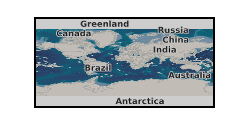
Monthly anomalies (August 2002 to July 2016) of total terrestrial water storage (TWS), soil moisture storage (SMS), surface water storage (SWS), snow water storage (SNS), groundwater storage (GWS) derived from an ensemble mean of 3 gridded GRACE products (CSR, JPL-Mascons and GRGS) and an ensemble mean 4 land surface models (CLM, NOAH, VIC and MOSAIC), provided by the NASA’s Global Land Data Assimilation System (GLDAS). Monthly precipitation (CRU) data, derived from the Climatic Research Unit (CRU), were aggregated over each aquifer system. GRACE, GLDAS and CRU datasets are publicly available at the global scale. (NERC grant NE/M008932/1)
-
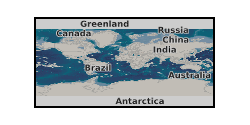
This poster on the UKCCSRC Call 2 project, The Development and Demonstration of Best Practice Guidelines for the Safe Start-up Injection of CO2 into Depleted Gas Fields, was presented at the Cardiff Biannual, 10.09.14. Grant number: UKCCSRC-C2-183.
-
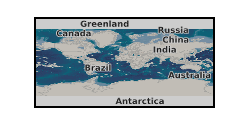
This dataset contains VASP runs performed on several supercomputing services (ARCHER, Monsoon, Thomas and Grace in the UK; Eos in the USA) to calculate the chemical potentials of liquid iron mixtures and solid ferropericlase at Earth's core conditions using density functional theory. Data are available for the chemical potentials of iron in MgFeO and oxygen in liquid FeSiO. These data were used to calculate the partitioning of oxygen between ferropericlase and Earth's liquid core and to analyse the chemical boundary layer above the CMB. The present grant also supported work regarding the homogeneous solid nucleation in iron and iron-oxygen mixtures at Earth's core conditions when dealing with the core paradox. Classical nucleation theory data and results from VASP runs and classical molecular dynamics runs performed on ARCHER and Eos (Oak Ridge, USA) are also included in the uploaded dataset. In addition, the present grant also supported research on the dynamics and evolution of the Earth's core, together with a study confirming the saturation of electrical resistivity of solid iron at Earth’s core conditions (these data were uploaded as part of a previous NERC Grant, NE/H02462X/1). Further details can be found in Davies, Pozzo and Alfe’ (2018, in press); Davies et al. (2018); Pozzo and Alfe’ (2016); Davies et al. (2015).
 NERC Data Catalogue Service
NERC Data Catalogue Service